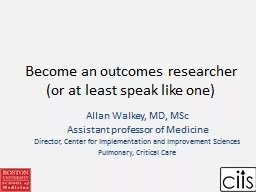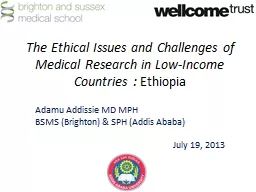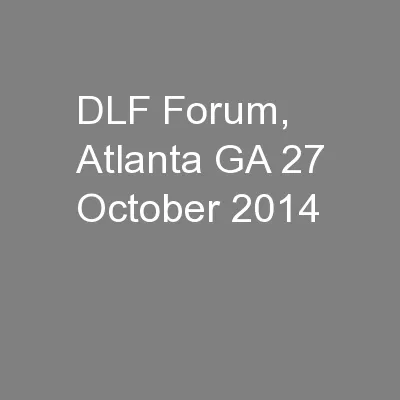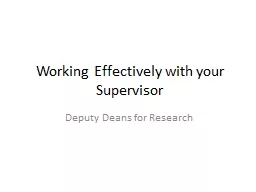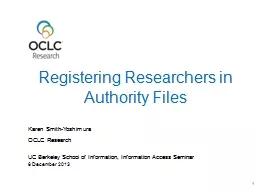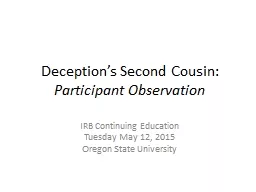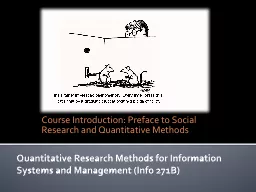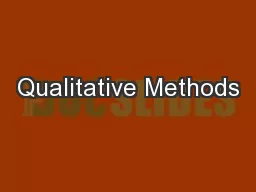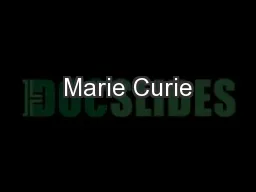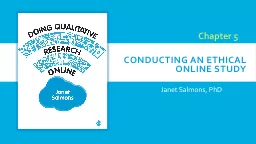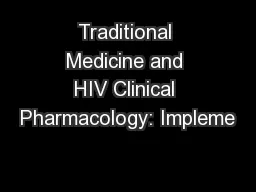PPT-Become an outcomes researcher
Author : luanne-stotts | Published Date : 2018-03-15
or at least speak like one Allan Walkey MD MSc Assistant professor of Medicine Director Center for Implementation and Improvement Sciences Pulmonary Critical Care
Presentation Embed Code
Download Presentation
Download Presentation The PPT/PDF document "Become an outcomes researcher" is the property of its rightful owner. Permission is granted to download and print the materials on this website for personal, non-commercial use only, and to display it on your personal computer provided you do not modify the materials and that you retain all copyright notices contained in the materials. By downloading content from our website, you accept the terms of this agreement.
Become an outcomes researcher: Transcript
Download Rules Of Document
"Become an outcomes researcher"The content belongs to its owner. You may download and print it for personal use, without modification, and keep all copyright notices. By downloading, you agree to these terms.
Related Documents

